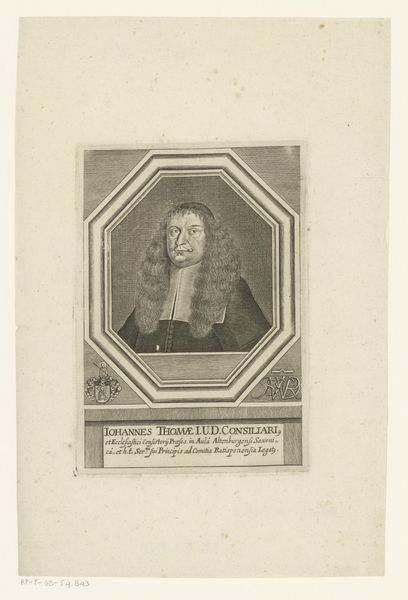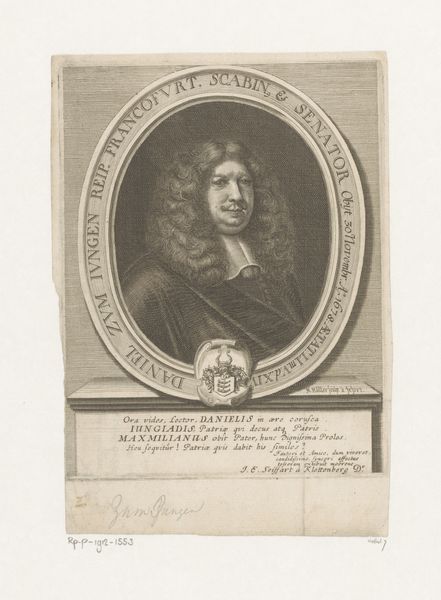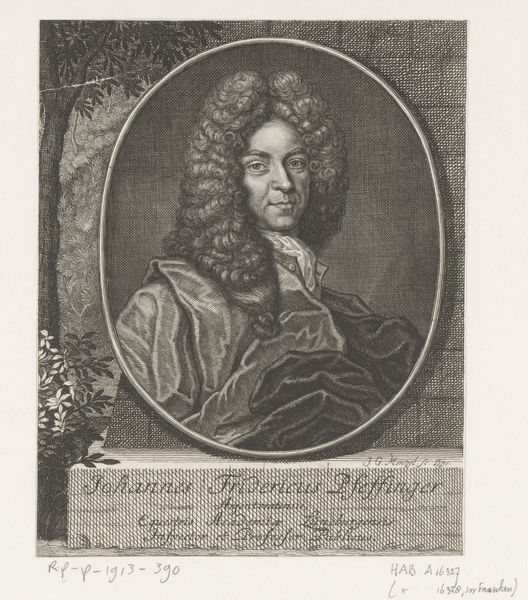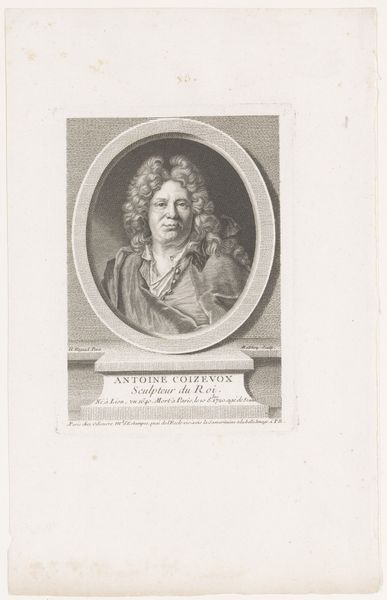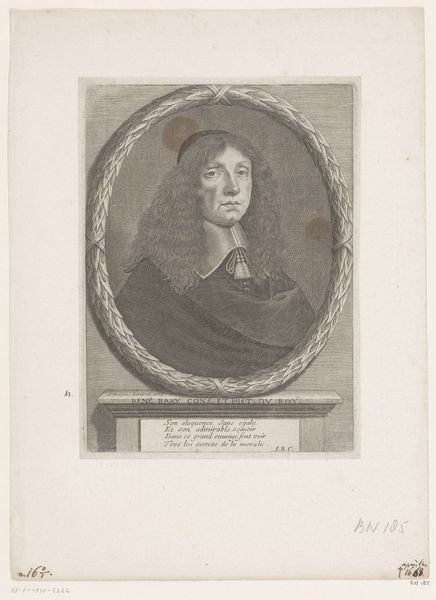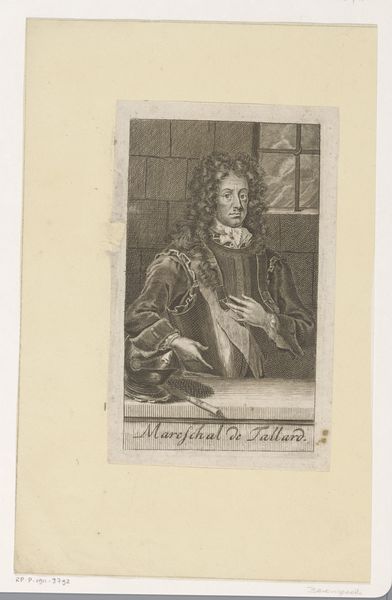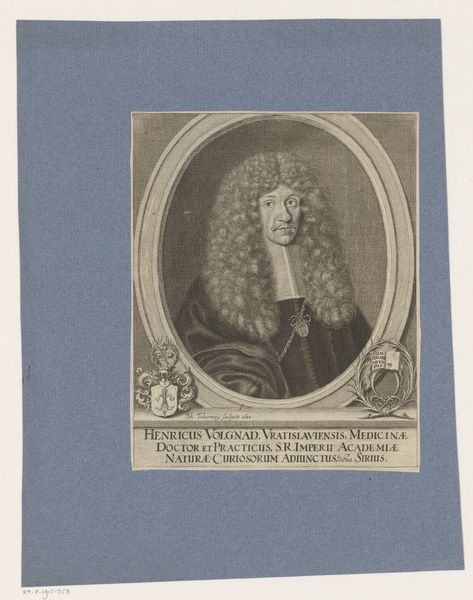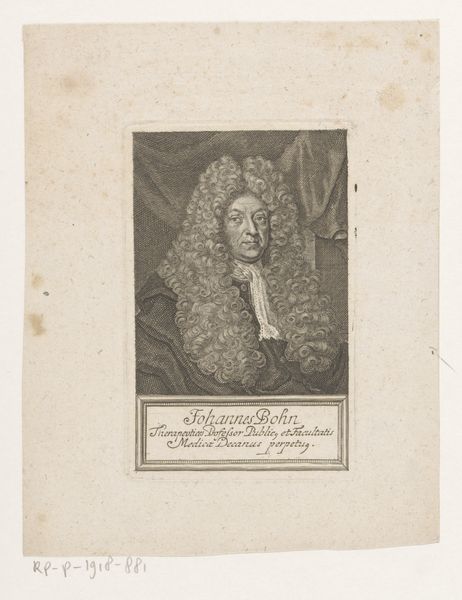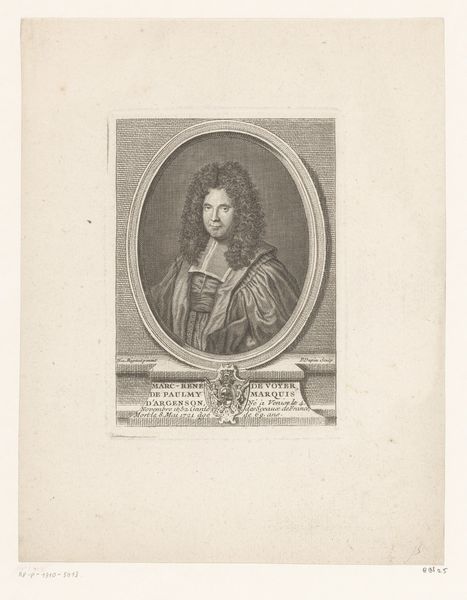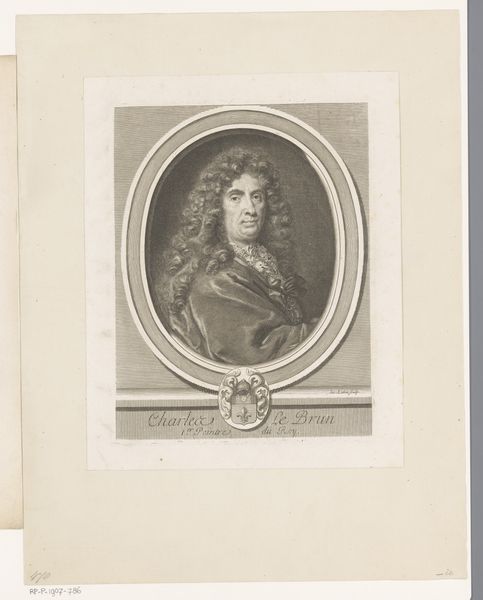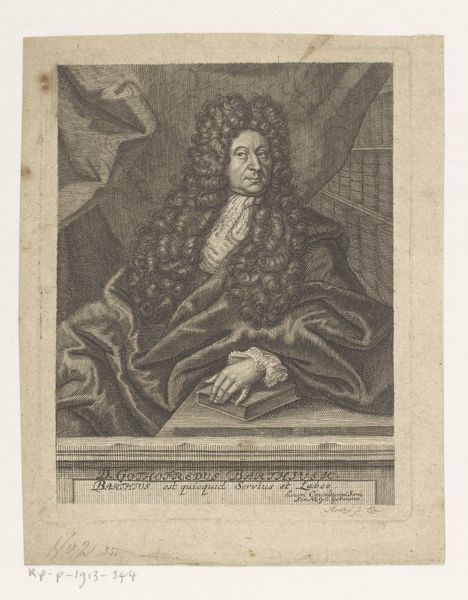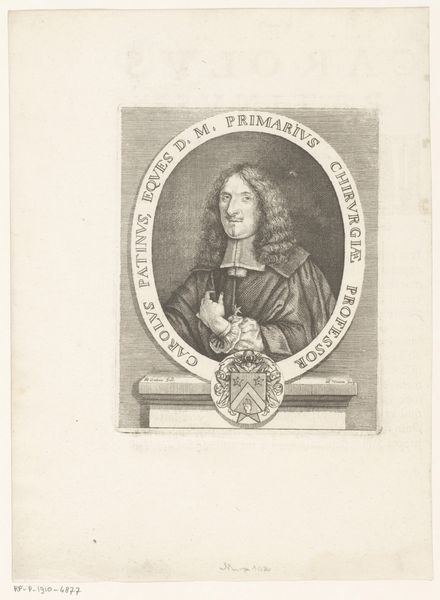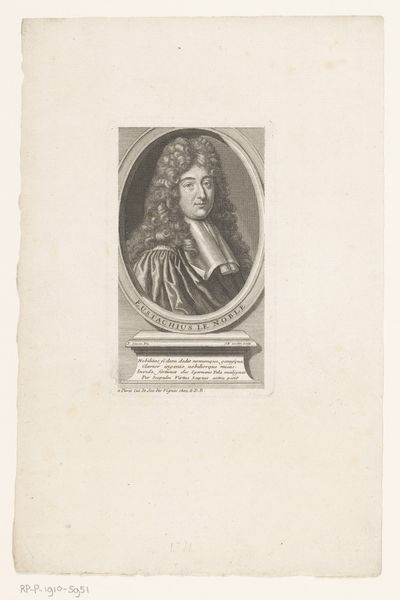
paper, engraving
portrait
baroque
old engraving style
paper
line
engraving
Dimensions: height 251 mm, width 197 mm
Copyright: Rijks Museum: Open Domain
Curator: Immediately I’m struck by the direct gaze and restrained mood of the figure. There’s a sense of contained power here, don’t you think? Editor: Indeed. What you are observing is a 17th-century portrait of Claude Ballin I, rendered through an engraving. Dating back to sometime between 1696 and 1700, this piece, which now resides here at the Rijksmuseum, is attributed to Jacques Lubin. Notice how it employs a meticulous line technique to capture the likeness. Curator: The lines create such striking tonal variations! And what can you tell us about Ballin himself, and why he was considered important enough to have his portrait memorialized? Editor: Well, in life, Claude Ballin was a celebrated goldsmith and he also held a court position for Louis XIV, who was himself, of course, an active patron of the arts. It comes as no surprise then to see him framed within such formal composition, complete with coat-of-arms. The oval surround further reinforces this visual declaration of stature and importance. Curator: You know, what resonates with me most is the symbolic tension in this period—it’s as if these formal displays of nobility were inherently laced with anxiety, with uncertainty about the future... There is this wonderful theatricality to it all, an anxious need to perform significance and command through dress and posture. Editor: A performance which engraver Jacques Lubin expertly translated through very careful lines. Paper as political instrument! How does the portrait function in light of later social upheaval, for instance, or changing aesthetic tastes? That’s always on my mind. Curator: For me, the face speaks to a shared cultural memory, especially around how we think of Baroque portraiture as an enduring style... It reflects how the visual arts shaped perception across generations, leaving an undeniable mark on our psyche. Editor: Absolutely. I’ll think about the engraving as a window into the complex relationship between artistry, power, and identity within its own historical context.
Comments
No comments
Be the first to comment and join the conversation on the ultimate creative platform.
